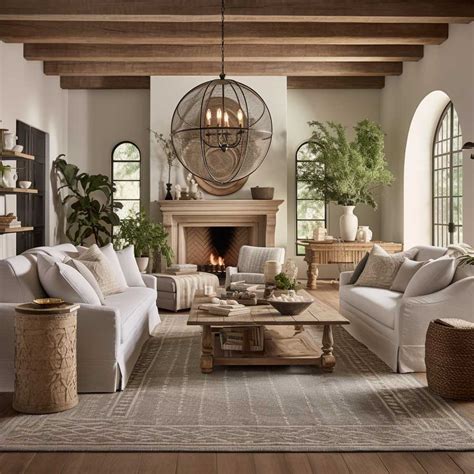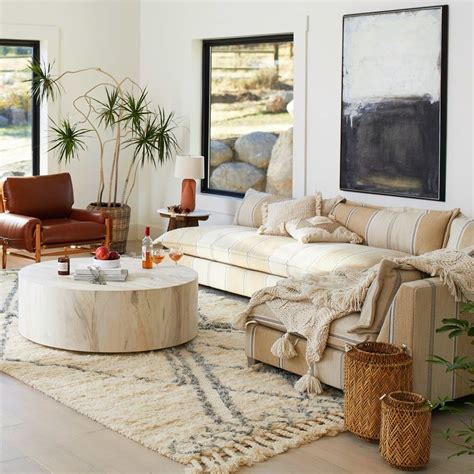Keeping a family home organized can be challenging, especially with kids in the mix. Clutter tends to accumulate quickly, turning your living space into a chaotic environment. However, with the right strategies, you can create a tidy, kid-friendly home that promotes both functionality and peace of mind. In this article, we’ll explore ten practical and effective home organization hacks designed to help you maintain a clutter-free family space. From decluttering and simplifying your living areas to creating child-accessible storage and implementing routine cleanup schedules, these tips will make it easier to manage your household while ensuring your kids have a fun and organized space to play and grow.
Join shzow.com as we uncover the details of this topic.
1. Declutter and Simplify
The first step towards a clutter-free family space is to declutter and simplify your home. Begin by taking a critical look at each room, identifying items that are no longer necessary, used, or cherished. Consider donating, recycling, or discarding these items to create more space and minimize visual clutter. Simplifying your home also means being conscious of what you bring into it. Focus on acquiring only essential and high-quality items that serve a purpose or bring joy to your family.
Involve your children in the decluttering process by encouraging them to choose toys and clothes they no longer play with or wear. This teaches them the importance of letting go and fosters a sense of responsibility. Additionally, implement a “one in, one out” rule to prevent future clutter. Regularly decluttering and simplifying your home will create a more organized, peaceful environment that is easier to maintain. This will allow your family to enjoy a space that feels open and inviting.

2. Toy Storage Solutions
Effective toy storage solutions are essential for maintaining a clutter-free family space. Start by designating specific storage areas for your children’s toys, ensuring they are easily accessible and neatly organized. Opt for storage bins, baskets, and boxes that are both functional and visually appealing. Clear or labeled containers are particularly useful, as they allow your children to see what’s inside and make cleanup easier.
For a tidy playroom, consider shelving units with cubbies. Each cubby can house a different type of toy, making organization easier and encouraging children to put their toys away after play. Another space-saving solution is storage furniture, such as ottomans with hidden compartments or benches with built-in storage. This allows you to keep toys out of sight when not in use, maximizing space and maintaining a clutter-free environment.
Rotating toys is a helpful way to manage playthings. By storing some toys away and bringing them out periodically, you can keep your children interested in their toys while also minimizing clutter in the play area.
Finally, involve your kids in the process of organizing their toys. When children have a say in how their toys are stored, they’re more likely to maintain the organization. With the right storage solutions in place, you can create a tidy, enjoyable space for your kids to play and explore.

3. Child-Accessible Storage
Fostering independence and keeping your home organized starts with child-accessible storage. When children can easily reach their belongings, they’re more likely to take ownership of tidying up. To achieve this, place storage solutions within their reach. Low shelves, cubbies, and floor-level bins are perfect for younger children. This allows them to retrieve and put away toys, books, and other items without needing assistance.
Open storage solutions, such as baskets and bins without lids, can simplify the clean-up process for children. These containers should be lightweight and easy for small hands to handle. Labeling storage bins with pictures or simple words is another helpful technique. This allows children to readily identify the correct location for items, making the clean-up process more efficient.
Furthermore, establish designated areas for various activities, like a cozy reading corner complete with a low bookshelf or an art center stocked with readily available supplies. By arranging the space to accommodate their interests, you’ll enable your children to maintain a neat environment, promoting both organizational skills and a sense of pride in their accomplishments.

4. Label Everything
Labeling everything is a simple yet powerful strategy for maintaining an organized home, especially in a busy family environment. Clear labels on storage bins, drawers, and shelves help everyone in the household know exactly where items belong, making it easier to keep things tidy. For young children who may not yet be able to read, consider using picture labels. These visual cues can guide them in identifying the correct storage spots for their toys, books, and clothes, promoting independence and responsibility.
When labeling, ensure that the text or images are large enough to be easily seen and understood. Use durable materials, like laminated labels or write-on tape, to withstand daily use. In shared spaces like the kitchen or living room, consistent labeling can prevent mix-ups and reduce the time spent searching for items.
By labeling everything, you create a system that is easy to follow, even during busy times. This not only helps maintain order but also teaches your children valuable organizational skills that will benefit them as they grow.
5. Create Play Zones
Creating designated play zones within your home is an effective way to contain clutter and provide your children with a clear, organized space for their activities. By setting up specific areas for different types of play, such as a corner for reading, a space for arts and crafts, or a section for building with blocks, you can help your children focus on one activity at a time while keeping the rest of the house tidy.
When establishing these zones, consider the layout of your home and choose areas that naturally lend themselves to particular activities. For example, a cozy corner of the living room might be perfect for a reading nook, complete with a low bookshelf and comfortable seating. In contrast, an open space in the playroom could serve as a zone for more active play, like building or pretend play.
Use rugs, mats, or even low bookshelves to visually define each zone, making it clear where each activity should take place. Not only does this organization help contain the mess to specific areas, but it also makes it easier for children to clean up and transition between activities, ensuring that playtime remains fun and stress-free for everyone.
6. Incorporate Multifunctional Furniture
Maximize space and keep your home organized by incorporating multifunctional furniture. These versatile pieces serve dual purposes, minimizing clutter and offering practical storage solutions. For instance, an ottoman with built-in storage doubles as a seat or footrest while discreetly storing toys, blankets, or other items. Likewise, a coffee table with drawers or shelves neatly stores books, magazines, and remote controls, keeping your living space clutter-free.
Investing in furniture that adapts as your children grow can be a wise decision. Adjustable shelving units and desks that can be modified as they age are great examples. Another space-saving option for shared bedrooms are bunk beds with built-in storage drawers or desks underneath.
A sofa with hidden storage compartments in the living room provides a convenient way to store extra pillows, blankets, or toys neatly out of sight. This not only helps to maintain a clutter-free space but also allows for quick tidying when guests arrive.
Multifunctional furniture maximizes every inch of your home, transforming it into a versatile, organized space that adapts to the needs of your growing family. This approach not only enhances functionality but also fosters a streamlined, clutter-free living environment.
7. Routine Cleanup Schedule
A regular cleanup schedule is key to keeping your family space organized and clutter-free. By cleaning regularly, you can stop messes from building up and teach your children the value of tidiness. Start by creating specific times for daily, weekly, and monthly cleaning tasks. For daily routines, encourage quick tidying sessions, like putting away toys before bed and clearing clutter from shared areas. This helps make cleaning a habit for everyone.
Weekly tasks should focus on thorough cleaning, encompassing activities like toy organization, surface wiping, and tackling any newly accumulated clutter. To maintain consistency, dedicate a particular day each week to these tasks. Monthly cleanups should delve into a deeper level of organization, including decluttering storage spaces and rotating toys to ensure they remain stimulating and engaging for your children.
Involve your kids in the cleaning process by assigning age-appropriate tasks. This not only makes the job easier but also teaches responsibility and teamwork. By sticking to a routine cleanup schedule, you’ll maintain an organized home environment that supports a calm and enjoyable living space for the whole family.
By implementing these kid-friendly home organization hacks, you can create a clutter-free and inviting space for your family. From decluttering and simplifying to incorporating multifunctional furniture and establishing a routine cleanup schedule, these strategies will help maintain order while making daily life more manageable. Involving your children in the process fosters responsibility and ensures they have a role in keeping the home organized. With these practical tips, you’ll enjoy a well-organized home that supports both your family’s needs and your peace of mind.
shzow.com
